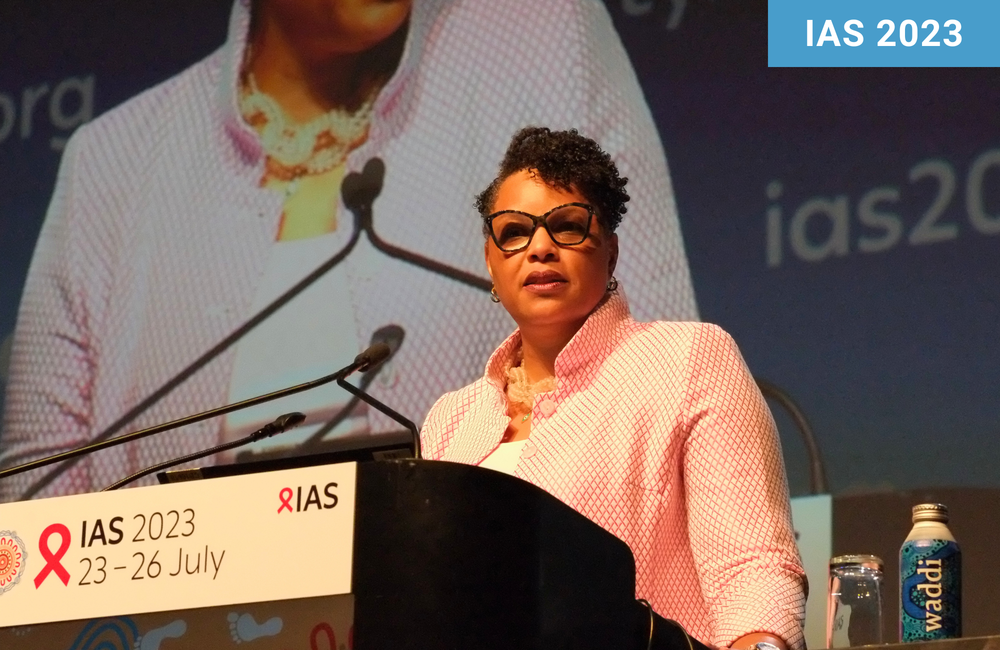
Before the discussion around Uganda's Anti-Homosexuality Act, drop-in centres providing HIV prevention and treatment services to key populations saw an average of 40 clients per week. However, as the discussion continued in Ugandan media, the number of clients decreased significantly.
By the time the first version of 'one of the world's harshest anti-gay laws' was debated and approved in the Ugandan Parliament in mid-March 2023, drop-in centres only saw an average of two clients per week. These findings were reported at the 12th International AIDS Society Conference on HIV Science (IAS 2023) in Brisbane on Monday.
The Anti-Homosexuality Act, which President Museveni signed into law on 26 May 2023, criminalises homosexual behaviour with sentences ranging from 10 years to the death penalty.
It also prohibits promoting homosexuality, which is not clearly defined and could criminalise activities related to public health, such as HIV prevention and community outreach. The law's vague language around "promoting" and "abetting" homosexuality provides opportunities for abuse.
Failure to report anyone suspected of violating this law is also considered a crime. This means that all individuals in Uganda must report anyone they suspect of engaging in homosexual behaviour or violating the law.
The US Ambassador to Uganda Natalie Brown came to the conference to draw attention to the issue.
“From before the law was passed up to today we continue to see examples of people denied treatment and people being reported to the police when they seek treatment,” she said. “Individuals are being fired from their jobs and evicted from their homes, increasing their vulnerability to exploitation. And the numbers are growing of people fearful of simply seeking healthcare or reporting abuse.”
Dr Vamsi Vasireddy from the Walter Reed Army Institute of Research, who leads the US President’s Emergency Plan for AIDS Relief (PEPFAR) programmes in Uganda, described the impact on the 84 drop-in-centres across Uganda that provide HIV prevention and treatment services for key population clients. Besides the drastic reduction in client flow, other immediate impacts were the temporary closure of four centres, increased assaults and home evictions of men who have sex with men and transgender people, and reduced physical contact by facility staff in communities.
In March, PEPFAR therefore began to identify and implement several measures to ensure continuity of service and ease of access. These included telehealth interventions, and key-population led apps. Home delivery of antiretroviral therapy and prevention products such as condoms and pre-exposure prophylaxis (PrEP) were made available. Safety measures were reinforced at centres, and multi-month dispensing was scaled up for eligible clients. Additionally, paralegal peers were employed to offer legal support.
Based on this supportive measure, Dr Vasireddy shared analysis from three drop-in centres whose locations were not disclosed to protect client safety and confidentiality. The number of clients accessing HIV services gradually increased from the end of March. From an average of five clients, the number rose to about 50 weekly clients across the three facilities towards the end of April.
Despite the rapid implementation of supportive measures and success in these three facilities, over 20 centres have not seen a resurgence of clients despite interventions.
Efforts to secure drop-in centres continue, including assessments and mitigation plans, sensitisation, information security training, incident reporting, and follow-up. Planned training for staff and client safety and security is also in progress.
Additional strategies include biometric access, lockable cabinets, self-encrypting hard drives, and installing guards and cameras.
“The constitutionality of the law is now with the Ugandan courts and the United States continues to monitor developments closely,” Ambassador Brown told the conference. “We are concerned about protecting the human rights of all Ugandan citizens. We want to ensure our investments in health, especially in HIV and AIDS, reach the intended beneficiaries, like key populations.”
“We want to maintain progress on ending HIV/AIDS as a public health threat by 2030,” she continued. “A setback in Uganda undermines these goals and the work of the past 40 years.”
Vasireddy V et al. Using client-centred models to Sustain HIV service delivery to key populations in Uganda. 12th IAS Conference on HIV Science, Brisbane, abstract OALBD0603, 2023.
